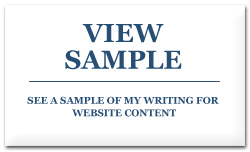Writing for the web is not the same as writing for print. When you’re online, you access and read information differently. I’ve taken web writing courses from the International Association of Business Communicators to learn all about these differences.
Generally speaking, print readers are content to take their time and learn about a subject in a pleasant way. Online readers want their information more quickly. Locate the subject. Zero in on what you’re after. Read and absorb it. Move on.
Classic web text
This page you’re now reading follows the guidelines of classic webified text:
- Create a scannable page – Subheads identify each section of content so readers can choose to read just what they wish.
- Highlight what’s important – Often, nuggets of important information are set in a box or other graphic element to put them under the spotlight.
- Use bullets – When appropriate, lists of three to five bullet points help make key facts easily accessible.
- Make it easy to digest – Short paragraphs, bite-size chunks of information and clear writing communicate your messages quickly and easily.
A formal style
Many people believe that common webified text – with its bite-size chunks and casual language – is too simplistic for many products, services and organizations. For example, a corporate law firm that wishes to project a formal image may be better served by conservative-looking web pages, with language similar to the style used for print.
My approach
I choose the style of writing that best suits each website, taking these factors into consideration:
- Website audience
- Nature of the company and the products or services
- Type of information to be communicated
Sometimes that means using classic webified text, other times a formal style, and quite often a blend.



